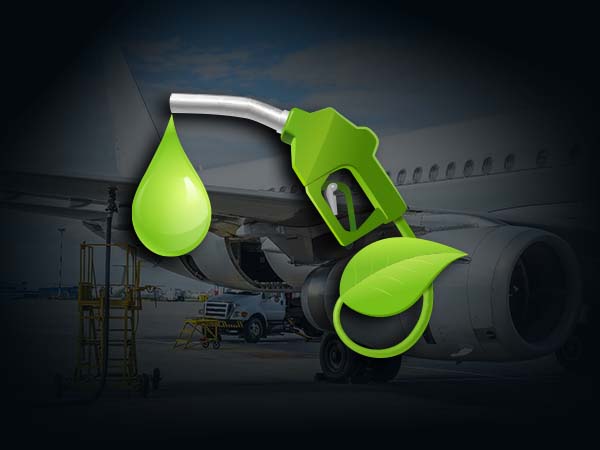The aviation industry stands at the cusp of a sustainable revolution, with Sustainable Aviation Fuel (SAF) being the torchbearer. For business aviation operators, the transition to SAF is not just an environmental imperative but also an economic benefit of using sustainable aviation fuel. Government incentives for SAF play a pivotal role in this transition. This article delves into the economic benefits that underscore the importance of SAF for business aviation operators.
Understanding SAF and Its Economic Implications
Sustainable Aviation Fuel (SAF) benefits represents a significant advancement in aviation technology, offering a cleaner-burning alternative to conventional jet fuel derived from finite fossil resources. SAF is produced from various sustainable feedstocks, such as waste oils, fats, green and municipal waste, non-food crops, and can also be synthesized through carbon capture methods directly from the atmosphere. These feedstocks are considered sustainable because they do not compete with food production, water resources, or contribute to deforestation.
Technically, SAF can reduce CO2 emissions by up to 80% over its life cycle compared to traditional jet fuel. This reduction is achieved because the carbon emitted during the combustion of SAF is partially offset by the carbon absorbed by the biomass from which it was produced during its growth phase. Moreover, SAF is designed to be a drop-in fuel, meaning it can be blended with conventional jet fuel and used without modifications to existing aircraft engines or fuel distribution infrastructures.
Global Adoption of Sustainable Aviation Fuel (SAF)
The adoption of SAF is gaining momentum worldwide. According to the International Energy Agency (IEA), the demand for SAF is expected to increase significantly, with a notable rise in planned capacity across the United States, Europe, and other regions. The International Air Transport Association (IATA) reported that SAF production tripled in 2023, reaching over 600 million liters, indicating a growing trend in the industry.
Statistical Analysis Cost of SAF vs Jet Fuel
Cost of SAF vs Jet fuel has historically been a barrier to its widespread adoption. In 2020, the price of conventional jet fuel was approximately $0.5 per liter, while SAF was priced at more than double, around $1.1 per liter. However, the gap is expected to close as production technologies mature and scale. The International Air Transport Association (IATA) projects that SAF could contribute around 65% of the emission reductions required for the aviation industry to reach net-zero CO2 emissions by 2050. This will necessitate a substantial increase in production to meet the growing demand, with the most significant acceleration anticipated in the 2030s as policy support becomes global, SAF achieves price parity with fossil kerosene, and credible carbon offsets become scarcer.
To facilitate this transition, IATA advocates for harmonized policies across countries and industries that are technology and feedstock agnostic. SAF incentives should be implemented to expedite deployment, and while SAF is in the early stages of market development, mandates should be used cautiously and only as part of a broader strategy to enhance SAF production and reduce unit costs.
Government SAF Incentives for SAF Impact
The role of government policy in promoting SAF use is pivotal. Government SAF incentives are crucial for bridging the cost gap between SAF and conventional jet fuel. The European Union’s ReFuelEU Aviation initiative is a policy measure that mandates an increasing share of SAF in aviation fuel supplies, with a specific quota for synthetic aviation fuels. This policy is designed to boost economic benefits of using sustainable aviation fuel consumption and reduce aviation emissions.
Economic Benefits of Using Sustainable Aviation Fuel (SAF)
Economic benefits of using sustainable aviation fuel benefits are multi-faceted. In the United States, SAF producers can receive a tax credit ranging from $1.25 to $1.75 per gallon, depending on the greenhouse gas emissions reduction achieved. This incentive structure is vital for enhancing SAF’s market competitiveness and encouraging investments in sustainable fuel technologies.
Impact on Flight Operations and Maintenance
The use of sustainable aviation fuel benefits for operators. Studies have shown that SAF can reduce particulate matter emissions from jet engines by up to 70%, contributing to cleaner operations and potentially lower maintenance costs. Moreover, the European Union Aviation Safety Agency (EASA) has been actively involved in facilitating the uptake of SAF within the aviation industry.
Future Projections for Sustainable Aviation Fuel (SAF) Development and Utilization
Future projections suggest a substantial increase in sustainable aviation fuel benefits production to meet the aviation industry’s goals. By 2050, it is estimated that millions of tonnes of SAF will be required annually to achieve net-zero carbon emissions targets set by the aviation sector. This growth is contingent on technological advancements and the scaling up of production facilities.
International Cooperation and Agreements on Sustainable Aviation Fuel (SAF)
International cooperation is pivotal for the widespread adoption of SAF. The International Civil Aviation Organization (ICAO) has established a global framework to promote SAF production and usage, aiming to reduce CO2 emissions in international aviation by 5% by 2030. Such agreements are essential for aligning global efforts towards sustainable aviation.
How Can Operators Be Incentivized To Use SAF
To incentivize operators to use SAF, financial mechanisms such as tax credits are employed. The role of government policy in promoting SAF incentives lowered the economic hurdles associated with transitioning to SAF and supported its integration into the aviation fuel mix. The U.S. Sustainable Skies Act, for example, proposes a credit starting at $1.50 per gallon for SAF with a 50% or greater lifecycle greenhouse gas savings, with higher rewards for greater reductions, up to a maximum of $2.00 per gallon.
At Just Aviation, we champion the adoption of Sustainable Aviation Fuel (SAF) within the business aviation sector. Government incentives for SAF are a significant factor in this endeavor. By working closely with flight crew, and our ground handling team, we facilitate the transition to more sustainable practices. Our global network of FBOs and Ground Handling Service providers plays a crucial role in making SAF a viable and attractive option for our clients.
